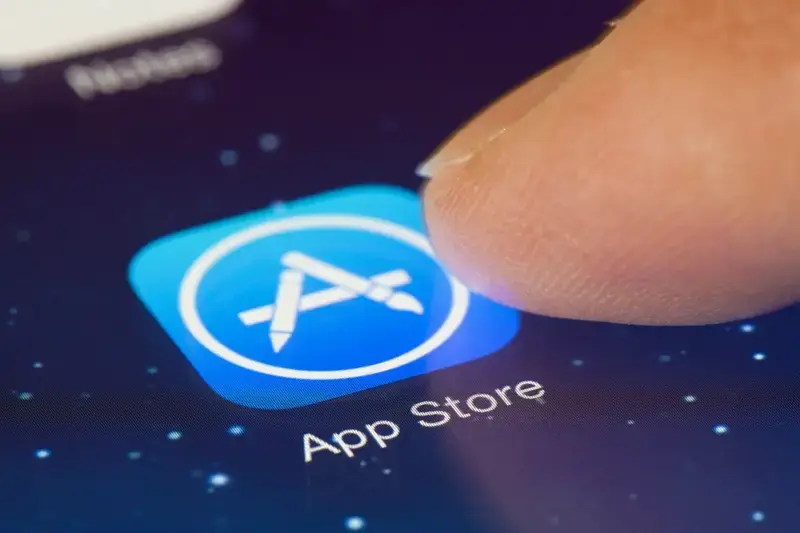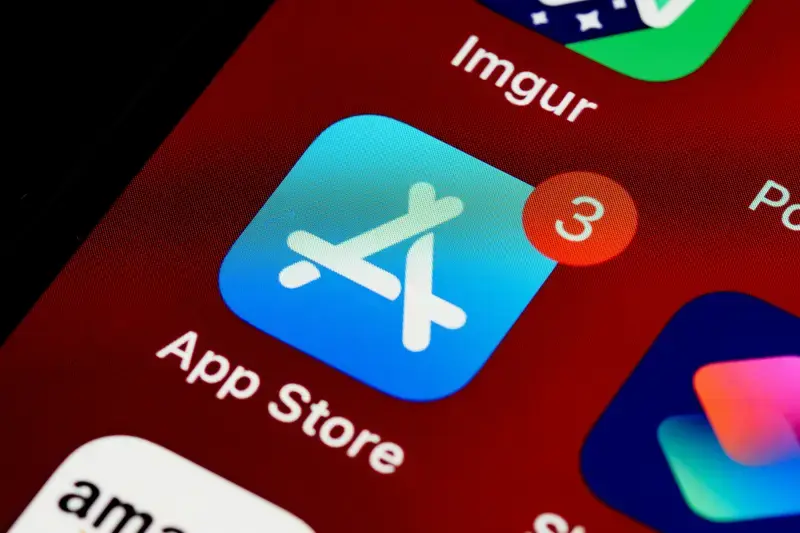What Is the Apple App Store Approval Process?
So, your business has developed an app, and now you’re ready to launch it on the Apple App Store. Exciting times, right? But wait, there's a small hurdle: the Apple App Store approval process. This can feel a bit like sending your child off to school for the first time – nerve-wracking, filled with anticipation, and a little bit scary. Don’t worry, we're here to hold your hand through this journey.
Quality is not an act, it is a habit.Aristotle
In this guide, we'll walk you through everything you need to know including:
- Understanding how the Apple App Store approval process works
- Why it's important for your business
- Apple’s criteria for app approval
- Prepping your app for review
- Estimated timelines
- Handling rejections
- How app updates fit into the picture
We aim to make this journey as smooth as possible, turning your anxiety into confidence, because let's face it, the approval process is a vital stepping stone towards getting your app into the hands (and phones) of millions of users. Let's dive in!
Understanding the Apple App Store Approval Process
Alright, so you’ve got a brilliant app idea, and after many a caffeine-fuelled night, it’s ready to debut on the Apple App Store. But the journey to reaching millions of potential users isn’t quite over yet. Welcome to the Apple App Store approval process—a meticulous (and sometimes mysterious) review system that ensures only high-quality and safe apps make their way onto the Apple platform.
Like a chef prepping their masterpiece for a Michelin-star inspection, developers must prepare their apps to meet Apple’s stringent guidelines. This process is about more than just hitting 'Submit', it involves a detailed checklist of requirements, ranging from the app’s functionality to its user interface, and even how it handles sensitive user data. Apple is known for its high standards, so they’ll be scrutinising every little detail!
For starters, think about app performance. How does your app handle under stress? No one likes an app that crashes or lags. Next, consider the user experience. Is your app easy to navigate? Does it follow Apple's design principles? Simplicity often goes a long way here. Also, don’t forget about privacy policies. Apple takes user data security very seriously, so ensure your app handles personal information responsibly.
By the end of this guide, you're not only going to understand the steps you need to follow for the approval process, but you'll also walk away with a clearer picture of how to avoid common pitfalls that trip many developers up. At Glance, we've guided numerous businesses through this process, so trust us—we understand the challenges and triumphs that come with it. Even though the process can feel like walking a tightrope at times, remember that meeting these standards only makes your app better in the long run.
Why the Apple App Store Approval Process Matters to Your Business
Passing the Apple App Store approval process isn't just a technicality; it’s a crucial step in setting your app up for success. Imagine spending countless hours, sleepless nights, and resources to develop an amazing app only to see it languish in obscurity because it doesn’t meet Apple’s rigorous standards. Heartbreaking, right?
This process matters because it’s about more than just getting a green light from Apple. It's about ensuring your app is of the highest quality, secure, and provides an amazing user experience to your users—all things critical for earning customer trust and loyalty. When your app meets Apple's guidelines, it signals to users that they can expect a seamless, safe experience, boosting your app's credibility.
- Apple rejects around 40% of apps submitted to the App Store in their first attempt.
- Common reasons for rejection include bugs, privacy issues, and not adhering to Apple's Human Interface Guidelines.
- All apps need to be tested on real devices and multiple iOS versions before submission.
- Meeting legal requirements, such as user data protection, is crucial to avoid rejection.
- Time-consuming steps include creating a distribution provisioning profile and distribution certificate, along with setting up an App Store Connect record.
- Apps need to have promotional materials ready to attract the target audience effectively.
- Even apps adhering to all guidelines may still face rejection and require follow-up revisions.
- Once approved, you can use promo codes and other marketing tools available in App Store Connect to boost your app's visibility.
Moreover, getting through this process opens up the gate to a massive user base. With over a billion active iPhone users worldwide, the Apple App Store is a treasure trove of opportunities. So, whether you're an established business or a startup, getting your app approved can mean the difference between thriving and just surviving.
And let's face it—no one likes rejections. A rejected app can be a setback, both emotionally and financially. Navigating the approval process successfully the first time can save you not just the headache, but also the costs associated with reworking and resubmitting your app.
What Apple Looks for in an App
Apple’s review team is meticulous. And that’s putting it mildly. They’re not just checking if your app runs without crashing—although that's a given—they’re diving deep into the overall quality and performance. So, what exactly are they scrutinising?
1. Functionality: Your app should be functional and perform as described in your marketing material. No user wants to download an app only to find that crucial features don’t work. Yes, bugs happen, but the essence of the app should be intact, delivering the promised experience without fuss.
2. Design: Apple has a soft spot for aesthetically pleasing and intuitive designs. They follow their own Human Interface Guidelines pretty seriously, which emphasise consistency, clarity, and delight. Ask yourself: is the app easy to navigate? Does it look sleek and modern? The design should be appealing but also serve a purpose.
3. Safety: Privacy and security are paramount. Apple requires that any app collecting user data have clear and transparent privacy policies. Consider how you store and handle user data and ensure it meets Apple’s standards to the letter. Nobody likes being left in the dark about where their information is going!
4. Content: Apple has strict rules about explicit content, intellectual property, and spam. Your app needs to offer value and should steer clear of anything that can be deemed inappropriate or offensive. Rehashing existing apps or spamming users with ads won’t cut it. Unique, valuable content is the key.
5. Performance: An app that drains the battery or gobbles up resources is likely to get the thumbs down. Test your app rigorously under different conditions to make sure it performs well across the board. If it slows down devices or causes other problems, it's back to the drawing board.
It's crucial that you understand and meet these criteria, ensuring your app is ready to impress both Apple and your end users. After all, if the reviewers snub it, your customers might too!
Preparing Your App for Review
First things first, thorough testing is a must. This means trying out your app on different Apple devices and iOS versions. You’d be surprised how many quirks and bugs can pop up in different environments. Fix these before submission to avoid the dreaded rejection email. Nothing will make your heart sink faster than seeing your app rejected due to a bug you could have squashed beforehand!!
Next up, you need to ensure your app aligns with Apple’s guidelines. These are not just suggestions; think of them as the rules of the game. Apple is quite particular about its ecosystem standards. From user privacy to the use of Apple’s APIs, every little detail matters. Make sure you thoroughly read and understand Apple's Apple App Store Review Guidelines.
Here’s a pro tip: verify that all links in your app are functional. Imagine a user clicking on a link and nothing happens—talk about a buzzkill. Check it twice, maybe thrice, just to be safe. Additionally, finalise all images and text within your app. No placeholders, no unfinished business; everything should be in tip-top shape.
Legal mumbo jumbo may not be the most exciting part, but it's essential. Ensure your app complies with all legal requirements. This includes having a privacy policy and any necessary permissions. It’s like making sure your car is insured before you hit the road.
Lastly, don’t forget about your promotional materials. You want your app to not only work well but also look appealing to your target audience. Eye-catching screenshots, engaging app descriptions, and even an introductory video can make a world of difference.
Remember, this review process might seem daunting, but it’s there to ensure that Apple users get the best experience possible. And if all of this feels overwhelming, don’t worry.
How Long Does the App Approval Process Take?
Waiting for the Apple App Store approval process, feels a bit like waiting for exam results. And you're not alone; plenty of businesses feel just as anxious and impatient during this stage.
Good news first! The review time has significantly improved. Where it once took 1 to 2 weeks for Apple to get back to you, it now typically takes just 2 to 3 days. Better still, about 90% of submissions are reviewed in less than 24 hours, which can be a little bit of a nail biter but also fairly speedy!
Once approved, you’ll get an email notification letting you know your app is ready for sale (even if it's free). Keep in mind, though, it can take up to 24 hours for it to go live on the Apple App Store. So, if you’re timing a grand launch or marketing campaign, give yourself that buffer.
If your app is an update rather than a brand new submission, the process might be even quicker. We've seen app updates reviewed and accepted in as little as 2 hours. This is particularly helpful if you find yourself needing to fix bugs or add features quickly.
While the approval process is considerably fast, it's always a good idea to build in extra time just in case you need to address any unforeseen issues. Checking your review status is easy through the My Apps section of Apple App Store Connect, so you'll never be left completely in the dark. Take a deep breath, cross those fingers, and it'll be live before you know it!
What to Do If Your App Gets Rejected
Discovering your app has been rejected can feel like a punch in the gut, but don't panic. Rejections happen, and they're not the end of the world. Instead, look at it as an opportunity to improve and refine your product. First, thoroughly read through Apple’s rejection notice. It will detail the specific reasons for the rejection. Sometimes it can be something as minor as a broken link, or as significant as violating one of Apple’s guidelines.
Next, address the issues mentioned in the rejection notice. This could involve fixing bugs, updating your UI, or ensuring your content complies with the guidelines. While it might seem daunting, this is your chance to make your app even better. Don't hesitate to seek clarification if the rejection reasons aren’t clear. Apple offers the Apple App Store Review Guidelines which is a great resource, and you can even reach out directly to Apple’s review team for more details.
Take rejection as an eye-opener. Take it as something that pushes you and makes you do things better. Amit Sadh
Once you've made the necessary changes, resubmit your app. Be sure to include a detailed explanation of the changes you’ve made in the Apple App Store Connect’s ‘Resolution Centre’. This helps Apple understand how you’ve addressed the issues. If you feel your app was unfairly rejected, you can make a case for reconsideration. This isn't always easy, but if you present strong arguments and evidence that your app meets the guidelines, there's a chance Apple might reverse their decision.
Remember, perseverance is key. At Glance have guided many businesses through these bumpy approval roads – so you're not alone in this, each step you take brings you closer to a successful app launch. Keep at it and use the support available to turn that initial 'no' into a 'yes.'
Frequently Asked Questions About The Apple App Store Approval Process
Is there a specific time when it's best to submit my app for approval? There's no 'perfect' time, but it's smart to avoid submitting close to major holidays like Christmas when the Apple App Store team may be swamped. Also, keep an eye on Apple's announcement schedule to dodge being caught up in the chaos right after big product launches.
What can I do to speed up my app's approval process? Make sure you've followed all of Apple's guidelines to the letter. Double-check your app for any bugs and ensure the user experience is slick. Clean and comprehensive documentation can also make a huge difference. Basically, the easier you make it for the review team, the faster they'll approve your app.
How will I know if my app has been approved or rejected? You'll receive a notification via email. Plus, you can track the status in Apple App Store Connect. If it's good news, congrats! If it's bad, don't panic. You'll get detailed feedback on what went wrong, so you can fix it and resubmit.
What should I do if my app gets rejected? Firstly, don't take it personally. Review the feedback carefully. Fix the issues pointed out by the review team and re-submit your app. Sometimes, it's just a minor tweak or a bit more polish, and you’ll be back on track.
How often can I update my app? As often as necessary! Regular updates not only keep your app fresh but also in Apple's good books. Just remember, each update goes through the approval process, so don’t rush them out without thorough testing.
Do I need to cater to all of Apple's guidelines? Absolutely. Apple’s guidelines might seem picky, but they’re there for a reason – ensuring quality and security. Following these keeps you on the right side of the review team and enhances the user experience.
What are the most common reasons for an app getting rejected? The most frequent culprits include bugs and crashes, inconsistent UI/UX, lack of value, missing or confusing submission/testing information, and repeated submissions of similar apps.
Regularly testing your app and ensuring it meets Apple’s requirements can help you avoid these pitfalls. In the end, getting through the Apple App Store approval process successfully is all about preparation and attention to detail, so, roll up your sleeves and dive in; you've got this!
Conclusion
Embarking on the journey of getting your app approved by the Apple App Store can feel like navigating a maze, but it doesn't have to be a lonely endeavour. By understanding the ins and outs of the process, preparing thoroughly, and being ready to adapt if your app doesn't get the green light right away, you're setting yourself up for success in a competitive market.
As we’ve highlighted, the approval process is meticulous for a reason. Apple wants to ensure that every app in the Store not only meets their stringent guidelines but also provides genuine value to users. And while it can sometimes be frustrating, it ensures the highest standards are maintained — benefiting developers and users alike.
Remember, persistence pays off. If your app gets rejected, take it as an opportunity to refine and improve, each round of feedback can bring you closer to publishing a standout app that not only meets Apple's criteria but also delights users. Here at Glance, we're always ready to lend a hand, offering the expertise and support you need to navigate this process confidently.
So as you embark on or continue your app development journey, keep striving for excellence. The reward? A spot in one of the most prestigious App Stores in the world and the chance to reach millions of potential users.
And if you ever feel overwhelmed, remember: you're not alone. We're here, rooting for your success every step of the way. Good luck!
Share this
Subscribe To Our Learning Centre
You May Also Like
These Related Guides

How Does the App Store Approval Process Work?

How Do I Get My App In The App Store?



